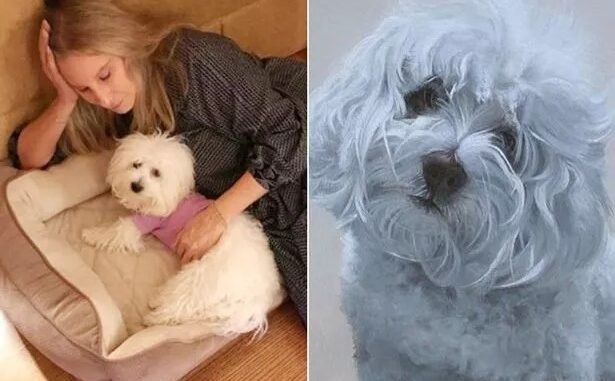
Barbra Streisand, the legendary entertainer known for her powerful voice and iconic performances, made headlines when she revealed a personal decision that sparked both fascination and controversy: cloning her beloved dog. The revelation shed light on the emerging technology of pet cloning and raised ethical questions about the practice of replicating animals, particularly as a means of coping with loss and preserving cherished memories.
Streisand’s connection with her dogs has been well-documented over the years. Her beloved Coton de Tulear, Samantha, held a special place in her heart until her passing in 2017. Samantha was more than a pet; she was a companion and source of comfort for Streisand, who has spoken openly about the profound bond she shared with her furry friend.
Following Samantha’s death, Streisand faced the grieving process like many pet owners, grappling with the loss of a beloved companion. However, unlike most, Streisand turned to cutting-edge science to preserve Samantha’s memory in a unique and controversial way: by cloning her.
In an interview with Variety magazine, Streisand candidly shared her decision to clone Samantha and the emotional journey that led her to explore this unconventional option. She revealed that before Samantha’s passing, cells were taken from her mouth and stomach to preserve her genetic material for potential cloning. After Samantha’s death, Streisand pursued the cloning process and ultimately welcomed two cloned puppies, Miss Scarlett and Miss Violet, into her home.
Streisand’s decision to clone Samantha highlights the deeply personal and emotional bond that many pet owners experience with their animals. For Streisand, cloning offered a way to extend that connection and keep Samantha’s spirit alive in a tangible way. However, the revelation also sparked a broader conversation about the ethics and implications of cloning pets.
Critics of pet cloning argue that it raises ethical concerns about animal welfare, scientific responsibility, and the commodification of living beings. Cloning involves complex and invasive procedures for both the donor animals and the surrogate mothers who carry the cloned embryos to term. Moreover, the technology is still relatively new and raises questions about the long-term health and well-being of cloned animals.
Streisand’s openness about cloning Samantha brought attention to these ethical dilemmas and prompted discussions about the broader implications of using advanced biotechnology in pet care. While cloning may offer a form of solace and continuity for grieving pet owners, it also raises important questions about the limits of scientific intervention and the moral considerations of manipulating animal life.
Despite the controversy surrounding pet cloning, Streisand has expressed her love and affection for Miss Scarlett and Miss Violet, emphasizing their unique personalities and the joy they bring to her life. She has shared photos and anecdotes about her cloned puppies on social media, offering glimpses into their playful antics and endearing quirks.
Streisand’s experience with pet cloning has underscored the emotional complexity of grieving the loss of a beloved pet and seeking comfort in unconventional ways. Her decision to clone Samantha reflects her deep attachment to her dogs and her desire to honor their memory in a meaningful and tangible manner.
In addition to her advocacy for pet cloning, Streisand remains actively involved in philanthropy and social causes. She has used her platform to support animal rights organizations, promote environmental conservation, and advocate for healthcare reform. Streisand’s commitment to making a positive impact extends beyond her entertainment career and underscores her dedication to creating a better world for people and animals alike.
As the debate over pet cloning continues, Streisand’s story serves as a poignant reminder of the profound bonds we share with our animal companions and the lengths we may go to preserve those connections. While cloning remains a controversial and divisive topic, Streisand’s experience sheds light on the complex intersection of science, ethics, and personal grief in the realm of pet ownership.
Ultimately, Barbra Streisand’s revelation about cloning her beloved dog Samantha has sparked important conversations about the ethical implications of pet cloning and the ways in which people navigate grief and loss. Her decision to clone Samantha reflects her deep love for her dogs and her desire to preserve their memory in a meaningful and lasting way. As technology continues to advance, the debate over pet cloning will likely continue, raising important questions about the intersection of science, ethics, and animal welfare in the modern world.
Leave a Reply